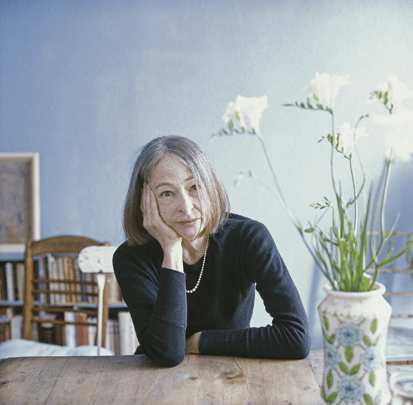Among the clever young Australians who came over here in the 1960s to find themselves and make their mark, a number, as we all know, never went back. A few became household names — Germaine Greer, Barry Humphries, Clive James — and British cultural life owes them a great deal.
Madeleine St John, the novelist and semi-reclusive eccentric who smoked herself to an early death in London in 2006, was one of them; but although eventually she made a minor literary reputation for herself, writing four novels in her middle age of which the third, The Essence of the Thing, made the Booker shortlist in 1997, she has remained largely unknown here.
Now a respected Australian journalist, Helen Trinca, has written Madeleine St John’s biography, published by the Melbourne-based literary publishers. Text, who make it their business to promote underrated Australian writers. Ironically, she greatly disliked being identified as Australian, and only one of her novels, the first and most brilliant, The Women in Black, is set there. ‘I was brought up on the idea that England was where I came from, in a deep sense where I belonged,’ she once remarked. ‘Australia was a deviation of one’s essence’.
Madeleine’s story, clearly and sympathetically told, is one of fractured identity, emotional disaster and a wonderful late-flowering talent against many odds. She was the child of two very different kinds of Australian; her father, Edward St John, was the well-connected descendant of English churchmen and intellectuals, a lawyer who became a leading QC and a Liberal (i.e. conservative) MP, who nevertheless held strong libertarian views.
Her mother, Sylvette, grew up in Paris and considered herself French; she had arrived in Australia in 1934 with her Romanian Jewish parents, in flight from anti-Semitism. Edward seems to have been a classic Anglo-Australian case of emotional strangulation, whereas his wife had the volatility and insecurity, social and personal, of the uprooted new arrival. For all her charm and sweetness, Sylvette was prone to depression and drink, both shameful at the time; despite efforts to treat her, she killed herself in 1954 when Madeleine was 12. The child was told she should never mention her mother again.
Thereafter, Madeleine’s relationship with her father went from bad to worse, especially after he remarried and had three more children. For the rest of her life she regarded him as a cruel bully who had driven her mother to her death and then tried to bully his daughters in turn. Her rejection of her Australianness and her decision, after a brief marriage to a fellow Sydney University student, to live in London she eventually became a British citizen) surely derived from her intensely unhappy childhood.
It took her a long time to become a published writer, and she only started writing fiction after spending almost ten years in the 1970s and 1980s struggling with a biography (unpublished) of Madame Blavatsky. She lived on the margins of Kensington in a series of council flats, scraping by with jobs in book or antique shops, going to church, joining an ashram in Ladbroke Grove, in and out of therapy for her own recurrent depressions and emotional crises. There were breakdowns, suicide attempts, several failed love affairs; entertaining and charming when she wanted to be, she had devoted friends but often fell out with them; her steadiest relationships were with a series of cats.
When, in 1993, Women in Black appeared, it was an instant success (Shena McKay, Hilary Mantel and Clive James all regard it as a work of genius). Although by no means a confessional novel, it is in its deceptively lighthearted way an indictment of Australian repression and provincialism, as it charts the liberating impact on the saleswomen in a leading department store of a group of Hungarian wartime immigrants, who know all about culture, food, fashion and sex.
The books that followed, though, all concerned the moral and emotional travails of the kind of people she knew in London, and reflect her preoccupation with the near impossibility, where love is concerned, of behaving well. A Pure Clear Light is one of the best novels ever written about adultery, and The Essence of the Thing one of the best about the pain of a failed relationship. With any luck, this biography will help to bring her the readership she deserves.






Comments